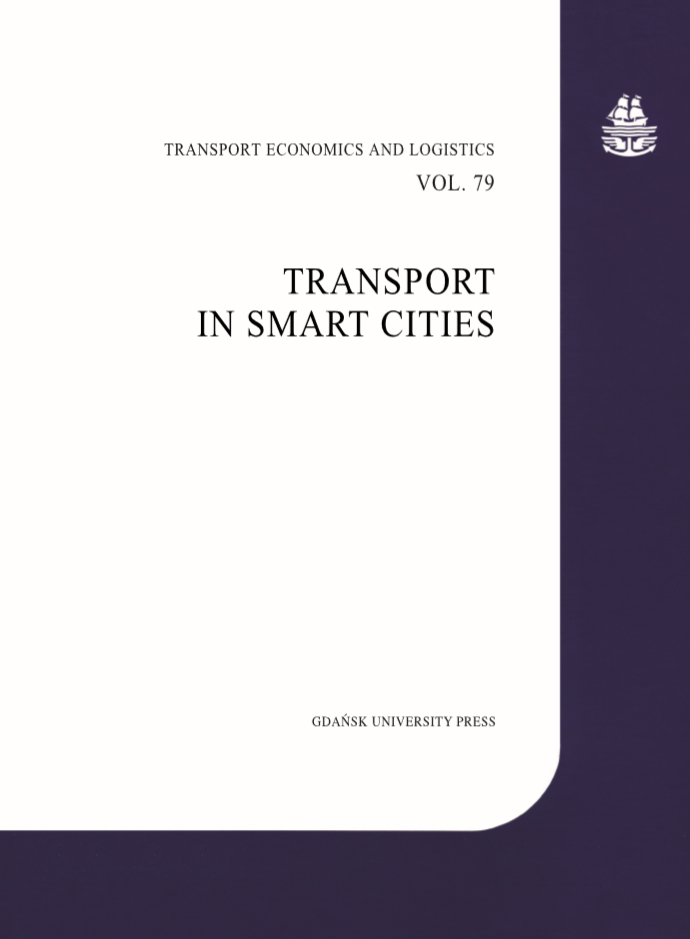Electric vehicle vs. internal combustion car in the smart city concept
DOI:
https://doi.org/10.26881/etil.2018.79.05Abstract
Replacing traditional internal combustion cars with electric vehicles is one of the most important aspects of the concept of electro-mobility which means environmentally friendly and clean transport. Such means of passenger transport logically fit in with the Smart City concept, as theoretically they could create opportunities for reducing traffic congestion and greenhouse gas emissions. The presented research results are an attempt to verify this hypothesis based on the opinions collected in a survey randomly conducted on users of two types of automobiles with electric and internal combustion engines. The results of the survey are not unambiguous since the development of electromobility is not supported by higher occupancy rates in electric cars and their more frequent use on short distances, but the argument for promoting them is their better operating and economic performance.
Downloads
References
The following references have been extracted and will be linked to the submission metadata.
Bogobowicz, M., Domański, J. (n.d.), Kiedy miasto jest inteligentne? Available from https://www.arcanagis.pl/kiedy-miasto-jest-inteligentne/ [Accessed 21 June 2018].
Cadar, R.D, Boitor, R.M., Petrelli, M. (2017), Urban Mobility and Road User Behavior Assessment, Procedia Engineering, 181; Berlin. Mobility in the City. Available from http://www.berlin.de/senuvk/verkehr/politik_planung/zahlen_fakten/download/Mobility_en_Chap1-2.pdf [Accessed 14 September 2018].
Costs and benefits of electric cars vs. conventional vehicles (n.d.). Available from https://www.energysage.com/electric-vehicles/costs-and-benefits-evs/evs-vs-fossil-fuel-vehicles/[Accessed 17 September 2018].
Giffinger R. (2017), Smart cities – Ranking of European medium-sized cities, Vienna University of Technology, Vienna. Available from http://www.smart-cities.eu/download/smart_cities_final_report.pdf [Accessed 14 September 2018].
Global EV Outlook (2016). Available from http://selectra.ie/sites/default/files/pdf/Global_EV_Outlook_2016.pdf [Accessed 17 September 2018].
Krupiński, M. (2011), Ile kosztuje posiadanie auta? Available from https://www.motofakty.pl/ artykul/ile-kosztuje-posiadanie-auta.html [Accessed 1 July 2018].
Palak, M. (2013), O współczesnych dojazdach do pracy, Nierówności społeczne a wzrost gospodarczy, z. 33, p. 161, University of Rzeszów, Rzeszów, p. 161.
Gajewski, J., Paprocki, W., Pieriegud, J. (2015), Megatrends and their impact on the development of infrastructural sectors, Gdańsk Institute for Market Economics – Gdańsk Banking Academy. Gdańsk Available from https://www.efcongress.com/sites/default/files/megatrendy_i_ich_wpyw_na_rozwj_sektorw_infrastrukturalnych_2015.pdf [Accessed 17 September 2018].
Occupancy rates of passenger vehicles. Available from https://www.eea.europa.eu/data-and-maps/ indicators/occupancy-rates-of-passenger-vehicles/occupancy-rates-of-passenger-vehicles [Accessed 16 September 2018].
Orcholska, K. (2015), Transport w mieście w kontekście założeń Białej Księgi Transportu z 2011 roku, Logistyka, 3.
Palinski, M. (2017), A Comparison of Electric Vehicles and Conventional Automobiles: Costs and Quality Perspective. Available from https://www.theseus.fi/bitstream/handle/10024/133032/BA.pdf [Accessed 17 September 2018].
Schmidt, E. (2017), Top 12 Reasons Why Electric Cars Are Better Than Gas Cars. Available from https://www.fleetcarma.com/why-electric-cars-are-better-than-gas-top/ [Accessed 17 September 2018].
Sierpiński, D. (2011), Dylematy wyboru alternatywnego wobec samochodu osobowego środka transportu w mieście, Logistyka, 4.
Survey on the way of using internal combustion and electric cars in 2018. Own online questionnaire survey June-July 2018

 Academic Scientific Journals
Academic Scientific Journals



